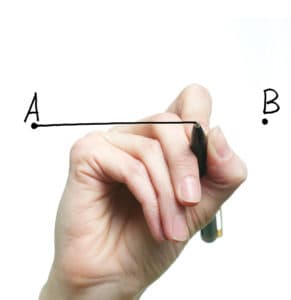
It goes without saying that in workers’ compensation risk management proactive response to a workplace injury or incident is important. However, what is often lost in the discussion of this topic is what takes place following the critical minutes following an injury and after the employee receives initial medical care and treatment. Taking time to think about your long-term response can save your program dollars and can increase productivity in the workplace.
Lack of Communication and the Post-Injury Dilemma
Take a moment to think about a work-injury from the perspective of an injured employee. The employee is frustrated with a number of issues. These can include:
- Not understanding the workers’ compensation benefit process and payment structure. They do not want to get an attorney because everything seems right or they do not want to be viewed as a troublemaker. They are receiving all the benefits they are entitled to, right?
- Time spent filling out forms and seeing a number of medical doctors and vocational rehabilitation counselors. When they do see their doctor, it is a rushed appointment and sometimes not all of their questions are answered.
Click Link to Access Free PDF Download
“13 Research Studies to Prove Value of Return-to-Work Program & Gain Stakeholder Buy-In”
- The major disruption in their life caused by physical disability. Their routine is in utter chaos. Instead of spending time with friends at work, they sit at home and recover.
- There is a reduction in income, but not everyday living expenses. Hopelessness and despair set in.
Missing from most post-injury response plans is an effective and consistent line of communication between the employer and injured parties. Workers’ compensation stakeholders serious about their bottom line need to consider the implementation of pre-injury communication with their disabled workforce. Lack of information breeds contempt.
Implementing an Effective Plan
It is important to plan and implement an effective post-injury response immediately after a work injury occurs. Suggestions to improve these lines of communication and avoid distrust of the injured employee can include:
- Assisting the injured worker in contacting immediate family about the injury and advising these parties about the status of the employee. In some instances, written authorization may be required given state and federal privacy laws.
- Contacting the injured worker immediately after they are out of danger and in a stable condition. Sending a get well card or making a telephone call are a good, visiting the employee at their home or in the hospital is even better. Proactive employers can also offer to take someone home from a hospital or clinic after their release. Random acts of kindness build trust.
- Empathizing with the employee and explaining to them the workers’ compensation process can also be helpful. Developing literature about the workers’ compensation system can also be helpful if done right.
The open lines of communication should not stop there. Additional follow-up steps can also be taken to build trust and confidence in the employee with the eventual goal of full recovery and return to work. Other measures should include:
- Weekly conferences with the injured worker to check on their physical and emotional status. These meetings can be in-person at a location convenient to the employee or via telephone.
- Allowing the injured party to visit with friends and co-workers on the employer’s premises can develop a sense of worth.
- Offering a broad selection of return-to-work opportunities.
Conclusions
Effective injury response goes beyond having a First Aid kit on hand and calling 9-1-1. For proactive stakeholders, it requires exceeding the minimum expectations to build a bridge of trust and promote a positive relationship with the injured worker. While this takes effort, it can reduce costs in your program and pay dividends via cost savings.
For additional information on workers’ compensation cost containment best practices, register as a guest for our next live stream training.

Author Michael Stack, Principal, Amaxx LLC. He is an expert in workers compensation cost containment systems and helps employers reduce their work comp costs by 20% to 50%. He works as a consultant to large and mid-market clients, is co-author of Your Ultimate Guide To Mastering Workers Comp Costs, a comprehensive step-by-step manual of cost containment strategies based on hands-on field experience, and is founder & lead trainer of Amaxx Workers’ Comp Training Center.
Contact: mstack@reduceyourworkerscomp.com.
Workers’ Comp Roundup Blog: https://blog.reduceyourworkerscomp.com/
Live Stream WC Training: http://workerscompclub.com/livestreamtraining
©2017 Amaxx LLC. All rights reserved under International Copyright Law.














